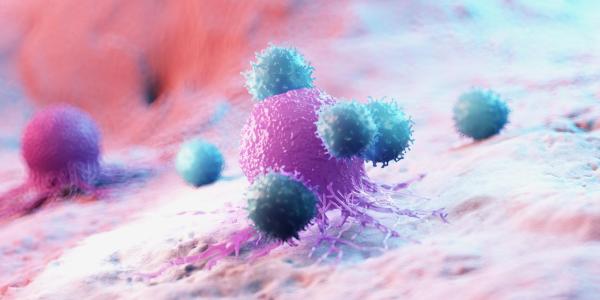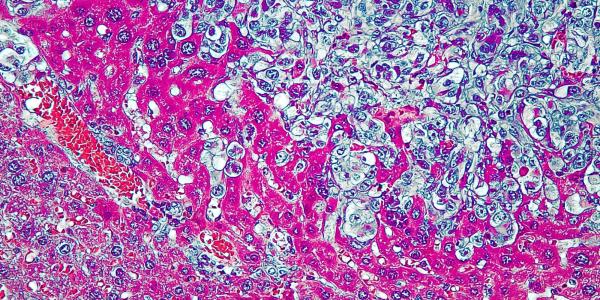Image caption:��Osvaldo Villagrana, 24, an integrative��physiology major at CU��ɫ������ gets his first dose of the Moderna vaccine.
Nearly a third of the U.S. population is now fully vaccinated against COVID-19, and 44% have gotten shot regimen. In Colorado, nearly half of eligible residents have gotten their first jab.
But vaccine efforts have begun to plateau in some areas of the country, with hesitant Coloradans ––including some college students––expressing concerns about the pace of the vaccine’s development and potential side effects and uncertainty about whether benefits outweigh risks.
Teresa Foley, a teaching professor of distinction in the Department of Integrative Physiology, has heard it all in her classes.
“I tell my students, ‘This is a no judgment zone. Ask me any question you want,’” says Foley, who teaches immunology and epidemiology at CU ɫ������. “If you are not a science major or don’t completely understand how the vaccine works, I can understand how you could be hesitant. It’s all about education. To help inform the students, I show data about vaccine safety and efficacy and I explain how vaccines work in lay terms.”
Here’s a look at the most common reasons she hears for people expressing hesitancy, and what she tells them:
“The COVID-19 vaccine was developed too fast.”

Teresa Foley
A lot of individuals are concerned about how quickly the vaccines were developed. They feel like it was a rushed process, as it typically takes about 73 months to develop a vaccine and this was done in 14 months. I ask them to think about it in terms of a group project. Yes, it may seem it was developed faster than usual. But never before has the entire world been working on the same group project at the same time.
Out of 326 trials and 111 vaccine candidates worldwide, only .��That shows the process is working. As a scientist myself, I trust it.
“The mRNA COVID-19 vaccine is new technology and it hasn’t been tested.”
Actually, when you look at the number of people enrolled in previous vaccine trials, those numbers are miniscule compared to the clinical trials for the COVID-19 vaccines. For instance, there were 8,884 participants in the clinical trial for the influenza vaccine and 5,803 for the chicken pox (Varicella) vaccine. In contrast, The Moderna trial included 30,000, Pfizer included 43,448, and Johnson & Johnson (which uses a different technology) included more than 44,000.
“You can get COVID-19 from the vaccine.”
This is not possible with the mRNA vaccines, as the vaccine does not contain the SARS-CoV-2 virus. The vaccine only contains the “instructions” for how to make the spike protein on the virus so your body can recognize it and mount an immune response against it.��
If someone does test positive for COVID-19 right after getting the vaccine, it may be that they were exposed to the virus before they got the shot or before they were fully protected (which is two weeks after the last dose). It was just a case of bad timing.
“You can still get COVID-19 after you get the vaccine.”
This is true, but exceedingly rare. These are called breakthrough cases. For instance, of 21,720 trial participants who got the Pfizer vaccine, eight got infected with COVID-19. In the placebo group, which was about the same size, 162 got infected. That brings the efficacy rate of the COVID-19 vaccine to about 95%. The efficacy of the flu vaccine, by comparison, is about 50% on a good year.
And if you were to get sick after being fully vaccinated for COVID-19, your antibodies would be built up so your symptoms would likely be mild.
“I already had COVID-19 so I don’t need the vaccine.”
Every time you get re-exposed to the same virus, your immune system builds a memory response to the virus, creating antibodies to protect you. If you get the COVID-19 vaccine after having been previously infected, your body will develop a bigger, faster and stronger antibody response to the virus. You may have some immunity against the virus if you already had COVID-19, but the vaccine will give you even more.
“I’m young and healthy so even if I get COVID-19 I’ll be fine.”
College students tend to think they are invincible. But they don’t quite think about the idea of herd immunity, in that when we get vaccinated, we are protecting not only ourselves but also others who can’t get the vaccine. The more everyone can develop immunity against the virus, the more we can protect the younger, older and immune-compromised population.
For things to return to “normal,” some research says at least 70% of the population must be vaccinated. If you can get the vaccine, you should.
“I’m worried about the side effects of the COVID-19 vaccine.”
The side effects are real but typically mild, including pain and swelling at the injection site, fever and chills and in some cases, tiredness and headache. The side effects only last a few days and mean your immune system is mounting a response and the vaccine is working. I ask students to compare this to the potential consequences of actually getting COVID-19, where symptoms can sometimes persist for months––even in those who had a mild version of the disease.


